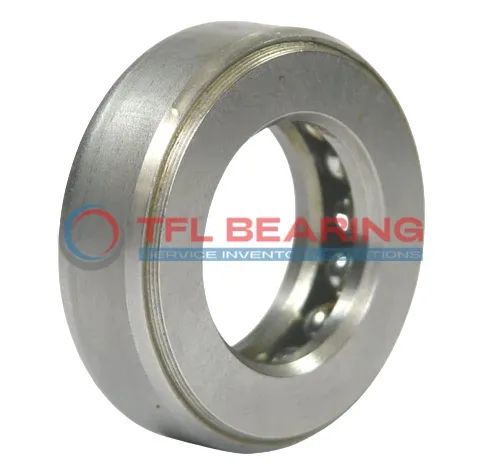
The D31 thrust ball bearing is a compact unit measuring 2.375″ by 3.844″ by 0.813″, crafted from durable 52100 chrome steel. It handles thrust loads up to 11500 lbf and operates smoothly at speeds up to 1900 RPM.
Its sturdy construction includes an outside band for added stability, making it reliable under heavy loads. Regular lubrication is needed to maintain optimal performance.
This bearing performs well in temperatures ranging from -30°C to 110°C, suitable for various industrial environments. Compliant with RoHS and REACH standards, it’s a safe and dependable choice.
Weighing 1.22 lbs, it’s ideal for applications like heavy machinery or automotive systems where robust thrust load support is essential.
"*" indicates required fields
How Is D31 Bearing Engineered for Reliability?
D31 Bearing is crafted from 52100 chrome steel, offering robust resistance to heavy thrust loads.
Its dynamic thrust load capacity reaches 11,500 lbf, making it suitable for demanding applications.
The precise bore diameter tolerance ensures a secure fit, enhancing operational stability.
With a temperature range of -30° to 110°C, D31 Bearing performs reliably in varied conditions.
Industrial Uses of D31 Bearing
D31 Bearing is commonly used in heavy machinery, such as hydraulic presses and industrial gearboxes, where its high thrust load capacity is essential. The inch sizing makes it a good fit for equipment designed to US standards.
Where Is D31 Bearing Used?
You’ll often find D31 Bearing in automotive applications like steering systems, where its durability handles constant axial loads. The chrome steel construction ensures long-lasting performance even under stress.
Built for Heavy-Duty Use: D31 Bearing
D31 Bearing excels in construction equipment, such as crane hooks, thanks to its robust design and high static thrust load rating. Its temperature range also makes it suitable for outdoor use in varying climates.
Automotive vs Aerospace: Applications of D31 Bearing
In automotive settings, D31 Bearing supports components like clutch assemblies, while in aerospace, it’s used in auxiliary systems requiring reliable thrust handling. The inch measurements ensure compatibility with both industries.
"*" indicates required fields